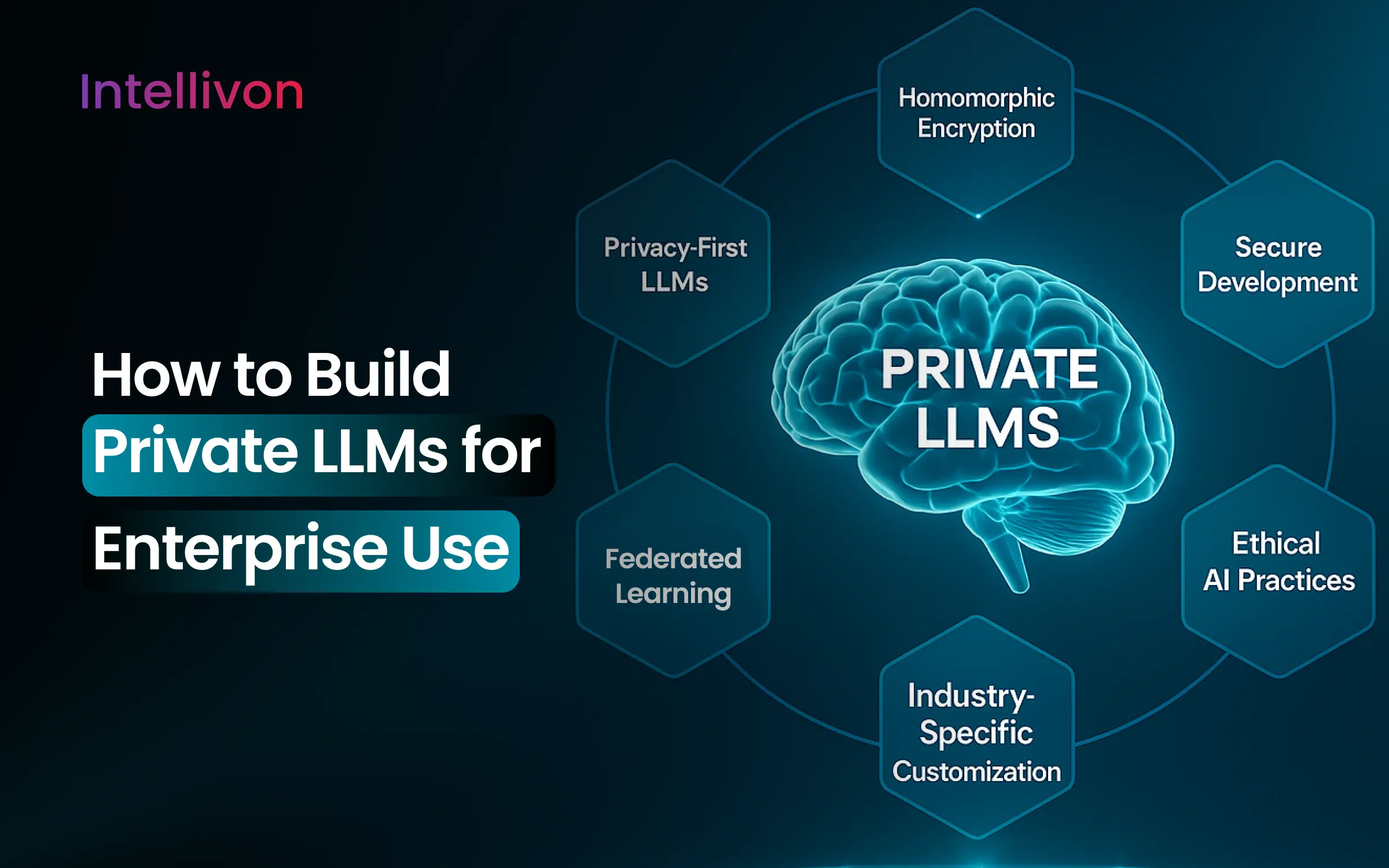Ever wondered how companies like Amazon are able to predict exactly what products to stock and when? That’s AI demand forecasting in action. With AI, Amazon can offer products just when consumers want them, keeping supply chains running smoothly.
AI-driven demand forecasting is no longer just a trend for tech giants like Amazon. It’s quickly becoming essential for enterprises across industries, from retail to manufacturing, looking to enhance efficiency and gain a competitive edge. Enterprises that have adopted AI demand forecasting solutions have recorded a 50% decrease in forecasting errors, driving ROI.
In this guide, we’ll explore the power of AI in demand forecasting, its real-world applications, and how it can revolutionize your enterprise operations. Intellivon is a leading provider of cutting-edge AI demand forecasting solutions tailored to industry-specific enterprises, resulting in higher ROIs and substantial growth.
The Right Time To Invest in AI Demand Forecasting Solutions
The AI-powered demand forecasting market is experiencing significant growth, with projections indicating a compound annual growth rate (CAGR) of 22.7% from 2024 to 2033, potentially reaching a market size of USD 22.15 billion by 2033, according to a Knowledge Sourcing Intelligence report.
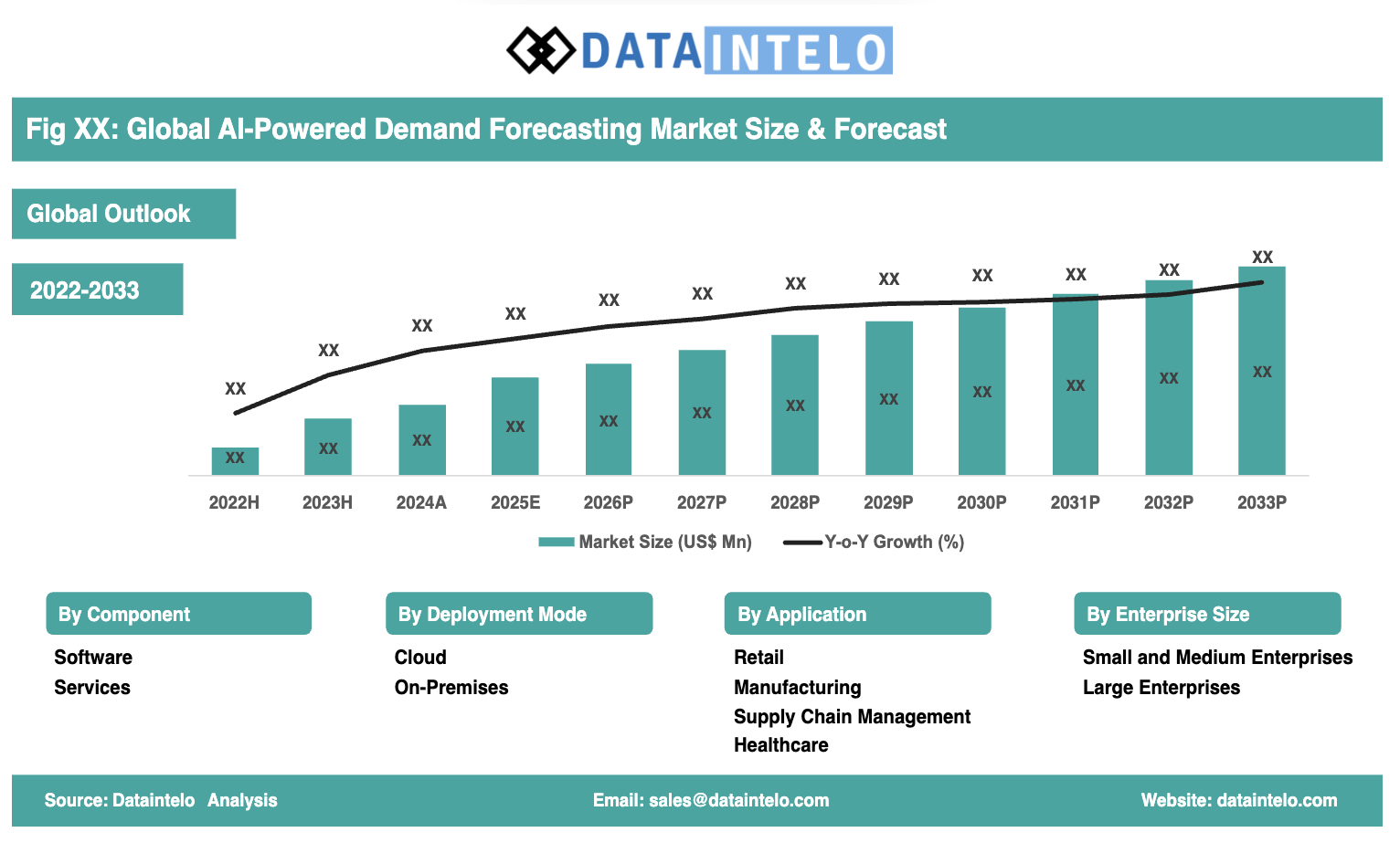
Key Market Takeaways:
- Organizations implementing AI-driven demand forecasting have reported up to a 30–50% reduction in forecasting errors and a 20–30% improvement in forecast accuracy.
- Only around 40% of enterprise-generated data is currently being leveraged, prompting companies to adopt automation and advanced analytics.
- AI demand forecasting is experiencing significant growth across industries such as manufacturing, healthcare, retail, and agriculture, with applications in demand, supply chain, and risk management.
- Technological advancements like Bayesian networks, deep learning, and evolutionary algorithms are at the heart of most AI forecasting deployments.
- Personalization is gaining traction, with micro-cohort and even individual-level forecasts becoming more common, particularly in e-commerce and retail.
- Industry adoption is rapidly accelerating, and tangible efficiency and financial benefits are already being realized at scale.
- The technology is shifting from purely operational support to a core function in strategic decision-making.
Why Do Traditional Forecasting Methods Fail at Scale for Large Enterprises?
Traditional forecasting systems often collapse under the weight of complexity in large organizations. They may have worked when data was smaller and markets moved slowly. But in today’s fast-paced, data-heavy environments, they fail to deliver. Here’s why.
1. Data Silos and Manual Workflows
Large enterprises generate massive data across departments, regions, and tools. However, most traditional methods depend on spreadsheets, isolated databases, and manual entries. This fragmentation leads to slow updates, frequent errors, and missed insights.
Without a unified data view, forecasters waste time cleaning, merging, or verifying data, when they should be analyzing it.
2. Blind to External Influences
Traditional forecasting relies mostly on internal sales data and simple trend analysis. But demand is no longer driven by past sales alone.
External factors like inflation, competitor activity, social media buzz, or even weather can drastically shift demand. Legacy models can’t process these signals in real time. And when they try, it’s often through time-consuming manual tweaks.
3. Lack of Flexibility and Scalability
When a company adds a new product line, enters a new market, or faces a supply chain disruption, traditional forecasting methods struggle to adjust. They require reconfiguring models from scratch or duplicating templates for each scenario.
This slows down decision-making and blocks the organization from adapting quickly.
4. Human Bias and Shallow Predictions
These methods often rely heavily on human input, which includes subjective judgment, last-minute edits, or departmental “gut calls.” That adds bias and inconsistency. Worse, traditional models rarely drill down to granular patterns, such as hyperlocal trends or fast-emerging demand shifts.
Static models are no match for dynamic markets. Enterprises need systems that learn from data, adapt quickly, and deliver precise insights. Traditional forecasting, unfortunately, was never designed for that.
Why AI is Crucial for Demand Forecasting For Enterprise
In today’s unpredictable and fast-paced markets, businesses need more than educated guesses to stay competitive.. AI demand forecasting offers a smarter, faster, and more accurate way to predict what customers will want, when they’ll want it, and how much they’ll need.

1. Boost in Forecast Accuracy
Traditional forecasting methods often come with a high margin of error. AI-powered systems reduce forecasting errors by up to 50%. By analyzing massive data sets, from historical sales to weather trends and even social media activity, AI models generate far more precise predictions.
This higher accuracy leads to better stock planning, fewer lost sales, and stronger margins.
2. Real-Time Market Shift Responsiveness
Markets can change overnight. A competitor launches a new product, a social media trend takes off, or a global event disrupts the supply chain. Traditional methods often fail to catch up in time.
AI models continuously learn from new data, adjusting forecasts on the fly. This enables businesses to respond immediately to changes, turning risks into opportunities.
3. Lower Operational Costs
Smart forecasting leads to smarter inventory management. Companies using AI can lower operational costs by up to 20%. Here’s how:
- Avoiding overstock and understock situations
- Reducing warehousing costs and spoilage
- Streamlining supply chain workflows
4. Better Customer Experience
When products are in stock and delivered on time, customers notice. AI ensures product availability, especially during high-demand periods, boosting both customer satisfaction and loyalty.
5. Effortless Scalability
AI systems can handle thousands of SKUs across multiple locations and sales channels. They provide localized insights while maintaining a centralized, enterprise-wide view, something manual systems can’t do efficiently.
AI demand forecasting isn’t just a nice-to-have feature. It’s a core strategic advantage. It transforms forecasting from a reactive task into a proactive, value-driving function that fuels growth, agility, and resilience.
Why Enterprises Are Adopting AI in Demand Forecasting: Industry-Specific Benefits
As industries evolve, enterprises are turning to AI-powered demand forecasting to overcome legacy limitations. From healthcare to retail, AI delivers tailored insights that enhance efficiency, resilience, and profitability. Here are some industry niche-specific benefits of using AI in demand forecasting for enterprises:
Healthcare
- Accurate Forecasting of Medications and Equipment:
AI models analyze seasonal illness trends, patient data, and historical consumption patterns to forecast precise demand. This helps prevent overstocking, understocking, and last-minute emergency purchases.
- Smart Staffing and Bed Management
By predicting patient admission volumes, AI helps allocate the right number of beds and healthcare staff. This ensures quality care delivery while optimizing labor costs.
- Expiry-Sensitive Inventory Control
AI tracks shelf life and consumption rates of critical supplies, improving expiry-sensitive planning. Hospitals reduce waste and enhance safety compliance in pharmacies and operating rooms.
- Personalized Healthcare Demand Prediction
AI forecasts the rising demand for individualized treatments using patient records and health trends. This enables efficient planning for genomics-based therapies and precision care.
Fintech
- Accurate Market and Loan Demand Forecasting
AI detects credit trends, customer spending patterns, and macroeconomic shifts. Financial institutions can better prepare for shifts in loan volumes and investment activity.
- Real-Time Fraud Detection
Advanced AI algorithms monitor transactions to flag unusual patterns immediately. This reduces fraud-related losses and ensures regulatory compliance with KYC/AML standards.
- Targeted Product Rollouts
By analyzing user behavior and financial product preferences, AI helps identify the right time and audience for launching new credit cards, loans, or savings plans.
- Liquidity and Risk Management
AI forecasting models predict cash flow gaps and investment risk with higher accuracy. Banks can optimize reserve requirements and manage assets more strategically.
Supply Chain & Logistics
- Inventory Optimization Across Nodes
AI tracks demand across warehouses, retailers, and suppliers in real-time. This enables better stock placement, reducing carrying costs and avoiding supply bottlenecks.
- Predictive Route Planning
Machine learning models analyze traffic, fuel prices, and weather conditions to optimize delivery routes. This cuts logistics costs and improves on-time performance.
- Supplier Risk Mitigation
AI forecasts potential delays or disruptions by analyzing supplier reliability, geopolitical factors, and news trends. Businesses can switch vendors proactively before issues arise.
- Demand Sensing for Just-in-Time Supply
AI senses short-term demand fluctuations and triggers timely restocking. This lowers lead times and improves supply chain responsiveness.
Retail & E-Commerce
- Accurate Seasonal and Promotional Forecasting
AI evaluates past sales, social buzz, and event calendars to forecast demand surges. Retailers can prepare better for holiday sales, product drops, and flash promotions.
- Real-Time Consumer Behavior Insights
AI analyzes browsing data, social media trends, and cart activity to adjust offers instantly. This boosts conversions and enhances personalization.
- Optimized Pricing and Discounts
Dynamic pricing models powered by AI respond to market demand, competitor activity, and stock levels. Retailers maximize margins without losing competitiveness.
- Reduced Stockouts and Better Service
AI ensures fast-moving items remain in stock by monitoring regional buying trends. This leads to improved customer satisfaction and loyalty retention.
Manufacturing
- Precise Production Planning
AI-driven forecasts help balance supply with actual market demand. This prevents overproduction and keeps inventory lean, especially for high-cost items.
- Efficient Raw Material Procurement
By forecasting material needs accurately, AI reduces unnecessary stockpiling and optimizes supplier orders. This saves on storage and procurement costs.
- Supplier Disruption Management
AI tools analyze shipment data, vendor reliability, and news reports to anticipate delays. Manufacturers can adjust production schedules or switch vendors in time.
- Leaner Operations and Sustainability
AI improves planning accuracy, helping reduce resource waste and energy consumption. This directly supports cost reduction and corporate sustainability goals.
How AI Works in Demand Forecasting
AI demand forecasting is a full pipeline. From collecting raw data to producing real-time, business-ready insights, the process involves several intelligent steps. Let’s break it down into simple stages that show how AI transforms complex information into accurate demand forecasts.

1. Data Collection & Processing
Everything starts with data. AI systems gather large amounts of information, both internal and external. This includes:
- Historical sales and inventory records
- Current stock levels and supply chain data
- Weather forecasts and economic indicators
- Market trends, competitor moves, and consumer sentiment
This data is cleaned, standardized, and structured using automated pipelines. These steps remove duplicates, fill gaps, and ensure consistency. Clean, well-organized data is essential for building reliable forecasts.
2. AI Model & Storage
Once the data is processed, it’s stored in secure, scalable databases or cloud platforms. This makes it easy to access for model training and real-time analysis.
Different AI models are used depending on the forecasting needs. These may include:
- Regression algorithms for linear trends
- Neural networks and LSTM models for time-series patterns
- Transformer models for complex, high-dimensional data
Feature engineering is also applied to improve the input quality, highlighting factors like seasonality, promotions, or regional behavior. Once trained, these models are saved and version-controlled for easy updates or retraining.
3. AI-Driven Insights & Forecasting
After training, the AI models can start making predictions. They take in new, incoming data and generate detailed forecasts across:
- Product categories
- Store locations
- Time periods (daily, weekly, seasonal)
Analytics engines then detect anomalies or trends, giving businesses not just numbers, but actionable insights. For example, if demand for a product is suddenly rising in one region, the system can alert teams in real time.
4. Decision-Making & Output
These insights are presented in user-friendly dashboards. Decision-makers can filter, visualize, and interpret forecasts quickly. More importantly, AI tools can trigger automatic actions like:
- Reordering stock
- Adjusting production schedules
- Launching promotional campaigns
This reduces manual effort and speeds up decision-making.
5. Continuous Learning & Optimization
AI systems don’t stay static. They are built to learn continuously. As fresh data comes in, daily or even hourly, the models are retrained automatically. This keeps forecasts up-to-date with current events, seasonal shifts, or unexpected demand changes.
In fast-moving industries like retail or logistics, this agility is a game-changer.
6. Performance Monitoring & Validation
Accuracy matters. That’s why the system constantly checks forecast results against actual sales or usage. It uses metrics like:
- MAPE (Mean Absolute Percentage Error)
- MAE (Mean Absolute Error)
- Custom KPIs based on business needs
When errors spike or patterns shift, the system flags them. This triggers recalibration or retraining, ensuring forecasts stay sharp and aligned with your business goals.
This intelligent cycle, which includes collecting data, learning from it, forecasting outcomes, acting on insights, and improving constantly, is what makes AI demand forecasting so powerful. For large enterprises, that means staying one step ahead in every market condition
Traditional Demand Forecasting Vs. AI-Powered Demand Forecasting
This table provides a clear comparison of the strengths and weaknesses of conventional forecasting versus the more advanced AI-powered forecasting, showing why AI is better suited for large enterprises dealing with complex and dynamic data.
| Feature | Traditional Demand Forecasting | AI-Powered Demand Forecasting |
| Data Source | Primarily historical sales data | Integrates historical sales, real-time data, external factors (weather, social trends, etc.) |
| Methodology | Relies on static models (time series, linear regression) | Uses dynamic models (machine learning, deep learning, neural networks) |
| Scalability | Difficult to scale across large operations or diverse product lines | Scalable and adaptable to large datasets, multiple SKUs, and regions |
| Flexibility | Rigid; requires manual adjustments for new products or market changes | Highly flexible; adapts to market fluctuations and new information |
| Accuracy | Often inaccurate due to assumptions about past trends | Provides more accurate, real-time forecasts based on evolving data |
| External Factors | Limited or no integration of external factors (economic shifts, weather) | Integrates and accounts for external variables (economic, competitive, etc.) |
| Data Processing | Manual data gathering and entry, prone to human error | Automated data collection, processing, and analysis in real-time |
| Speed | Slow to generate forecasts due to manual processes | Fast, real-time forecasting with automated updates |
| Forecasting Granularity | Broad, often missing local or emerging patterns | Granular forecasting, capable of identifying micro-cohorts or specific trends |
| Adaptability | Inflexible and slow to adapt to changes in the business environment | Adapts instantly to market shifts and new data |
| Bias | High human bias and subjective decision-making | Minimizes human bias, relying on data-driven insights |
| Cost Efficiency | Time-consuming and resource-intensive due to manual processes | More cost-effective in the long run due to automation and accuracy |
Industries-Specific Use Cases of AI Demand Forecasting Software
AI demand forecasting software is transforming how large enterprises plan, predict, and respond across sectors. From real-time supply chain optimization to infrastructure planning and personalized service delivery, here’s how different industries are leveraging AI-powered forecasting for measurable impact.
1. Retail & E-Commerce
1. Omnichannel Inventory Optimization
AI predicts demand across online, mobile, and physical channels, enabling balanced inventory allocation and reducing out-of-stock situations in high-traffic locations.
2. Dynamic Pricing & Promotion Planning
By forecasting price elasticity and campaign impact, enterprises can optimize discounting strategies and maximize revenue during seasonal and flash sale events.
3. Supply Chain Demand Sensing
Real-time data from POS, web traffic, and mobile activity allows AI to detect demand surges early. This helps brands reduce the bullwhip effect and improve collaboration with suppliers.
2. Manufacturing & Industrial
1. Production Planning & Capacity Management
AI models forecast SKU-level demand and translate it into optimized production schedules, reducing bottlenecks and idle time on factory floors.
2. Raw Material & Component Procurement
Forecasting raw material and component needs helps manufacturers lock in pricing, avoid overstocking, and prevent production halts.
3. Spare Parts & Aftermarket Services
By analyzing global service data, AI predicts parts consumption for proactive inventory planning and better customer support.
3. Consumer Packaged Goods (CPG)
1. Trade Promotion Optimization
AI analyzes lift and incremental volume from promotions, guiding smarter trade spend allocation and ROI tracking.
2. New Product Introduction
Forecasting market adoption across multiple geographies allows faster product rollouts with reduced launch risk.
3. Seasonal Demand Planning
AI identifies historic and emerging seasonal patterns to align production and logistics ahead of peak demand periods.
4. Pharmaceutical & Healthcare
1. Drug Demand Forecasting
Predicts prescription volumes by therapeutic area and geography, enabling precise production and supply chain decisions.
2. Clinical Trial Supply Planning
AI forecasts patient enrollment and trial supply needs across global sites, reducing overage and avoiding stockouts.
3. Medical Device Utilization
Analyzes hospital usage patterns to forecast demand for consumables and capital equipment in diverse care settings.
5. Automotive & Transportation
1. Vehicle Demand Forecasting
AI models predict buyer behavior by model, region, and features, enabling accurate production planning and dealer allocations.
2. Aftermarket Parts Demand
Forecasting replacement cycles helps manufacturers and dealers optimize inventory and avoid service delays.
3. Electric Vehicle Infrastructure
Predicts demand for EV charging infrastructure across regions, informing rollout and investment strategies.
6. Technology & Telecommunications
1. Hardware Component Demand
AI forecasts semiconductor and chip demand based on product roadmaps and consumer adoption trends.
2. Network Capacity Planning
Predicts spikes in bandwidth usage, helping telecoms optimize infrastructure upgrades and capacity provisioning.
3. Software License Optimization
Anticipates enterprise software usage trends, aiding in right-sizing licensing and reducing overages.
7. Energy & Utilities
1. Energy Demand Forecasting
Predicts electricity, gas, and renewable energy consumption at hourly, daily, and seasonal levels, enabling accurate load balancing.
2. Grid Infrastructure Planning
AI forecasts infrastructure maintenance and expansion needs, supporting capital planning and asset longevity.
3. Commodity Trading
Predicts price and demand trends for oil, gas, and renewables, improving trade and hedging decisions.
8. Financial Services & Insurance
1. Credit Risk & Loan Demand
Forecasts origination volumes, delinquency rates, and credit risk exposure across lending portfolios.
2. Insurance Claims Forecasting
AI predicts the frequency and severity of claims, allowing more accurate reserve planning and pricing strategies.
3. Investment Portfolio Optimization
Forecasts market sentiment and demand for specific asset classes, helping firms adjust asset allocation in real time.
How We Implement AI Demand Forecasting Solutions for Enterprises
At Intellivon, we design and deploy enterprise-grade AI demand forecasting systems that are customized for scale, accuracy, and seamless integration. Our end-to-end approach ensures your forecasting engine delivers real business value from the start. Here’s how we bring it to life.
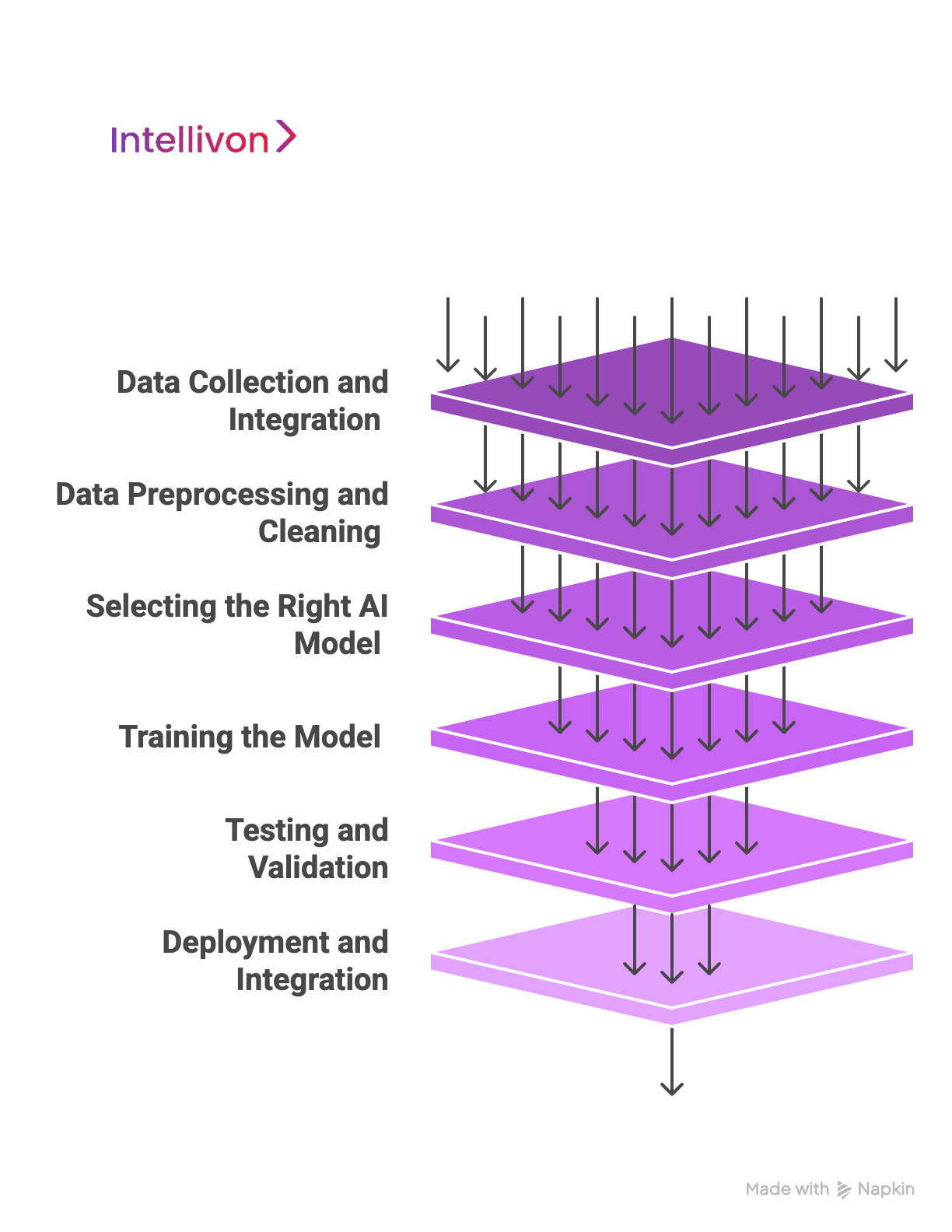
1. Data Collection & Integration
The process begins by collecting comprehensive historical and real-time data from a wide range of sources. These include enterprise systems like ERP, CRM, and POS platforms, as well as inventory databases, supply chain pipelines, and relevant external feeds such as market trends, weather conditions, and competitor activity.
Integrating these diverse data streams into a centralized, structured platform is critical. It creates a unified, high-quality data foundation from which AI models can generate accurate, meaningful forecasts.
2. Data Preprocessing & Cleaning
Raw data alone is not enough. It must be accurate, consistent, and complete. This stage involves identifying and resolving missing values, filtering outliers, standardizing formats, and transforming key variables into structured, usable inputs.
Clean data directly impacts forecast reliability. At Intellivon, we automate this stage as much as possible to eliminate bottlenecks and ensure consistency across sources.
3. Selecting the Right AI Model
Once the data is ready, we select or tailor AI models that align with your industry requirements and business goals. Depending on complexity and use case, this might involve regression models, decision trees, neural networks, or time-series models like ARIMA and LSTM.
Our team performs detailed feature engineering to highlight key patterns within the data, boosting the model’s ability to make accurate, real-world predictions.
4. Training the Model
With the model architecture selected, we train it using your historical data. This step includes splitting data into training and validation sets, fine-tuning hyperparameters, and optimizing for your enterprise’s specific KPIs, whether that’s minimizing stockouts, reducing overstock, or improving service levels.
The goal is to ensure the model learns from past trends while remaining flexible enough to adapt to future shifts.
5. Testing & Validation
Before full deployment, we rigorously validate the model to ensure it performs accurately under real-world conditions. This involves running tests with fresh datasets and simulating a variety of demand scenarios, such as seasonal spikes, supply chain disruptions, or regional market shifts.
We stress-test the model for volatility and unexpected input, so that it can handle real-life complexity with ease and consistency.
6. Deployment & Integration
Once validated, the forecasting engine is deployed into your live environment. We ensure smooth integration with ERP, CRM, and business intelligence systems so that forecasts become immediately actionable. Real-time data flows directly into intuitive dashboards and planning tools, enabling business users to visualize trends, track performance, and make decisions without relying on IT teams. Our deployment approach is low-disruption and high-impact, making advanced forecasting accessible to every relevant team.
7. Continuous Monitoring & Improvement
AI forecasting doesn’t stop at deployment. It’s a living system that learns continuously. At Intellivon, we establish ongoing monitoring mechanisms to evaluate model performance against KPIs such as MAPE and MAE. As new data flows in, automated retraining pipelines keep the model fresh and aligned with market conditions.
Feedback loops, usage tracking, and error analysis inform further optimization. This ensures your forecasting engine remains resilient, adaptive, and business-critical over time.
With over 500 AI deployments across complex industries, Intellivon combines deep technical knowledge with enterprise-grade delivery. We don’t just build AI models, we create intelligent systems that drive business transformation. Our forecasting solutions are designed to scale, explain themselves, and evolve with your organization. From implementation to continuous support, we partner with your teams to ensure success at every phase.
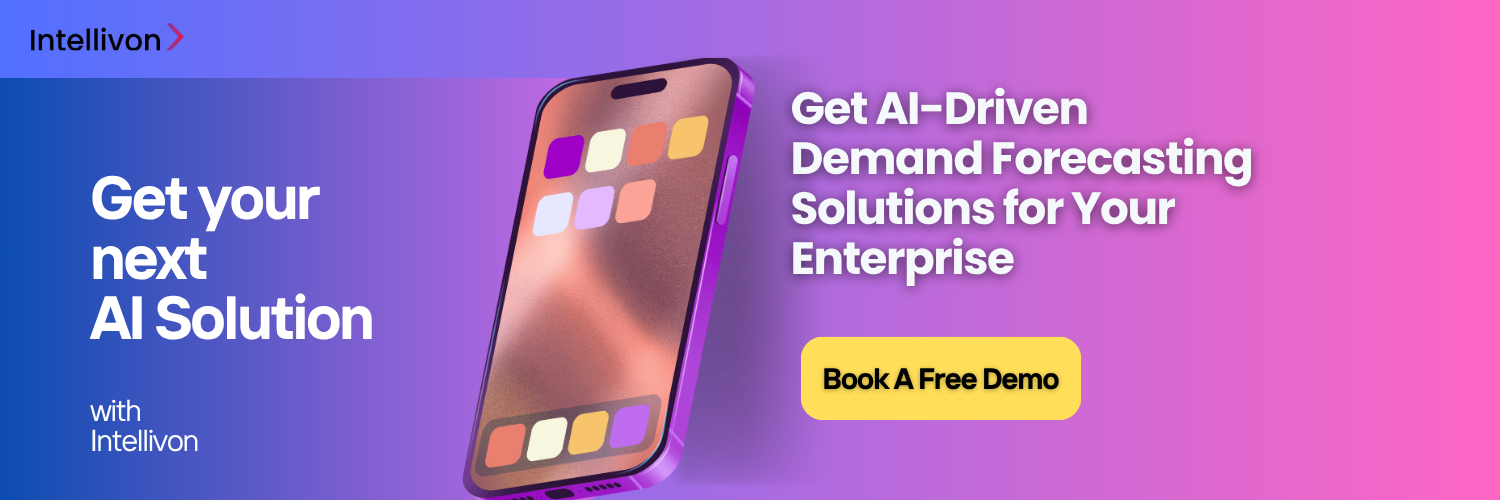
Real-World Examples of Enterprises Using AI for Demand Forecasting
AI-driven demand forecasting is not just a trend; it’s transforming how businesses manage operations, optimize inventories, and satisfy customers. Here are some notable examples of enterprises leveraging AI-powered solutions to stay ahead in competitive markets:
1. Amazon: AI-Powered Inventory Management
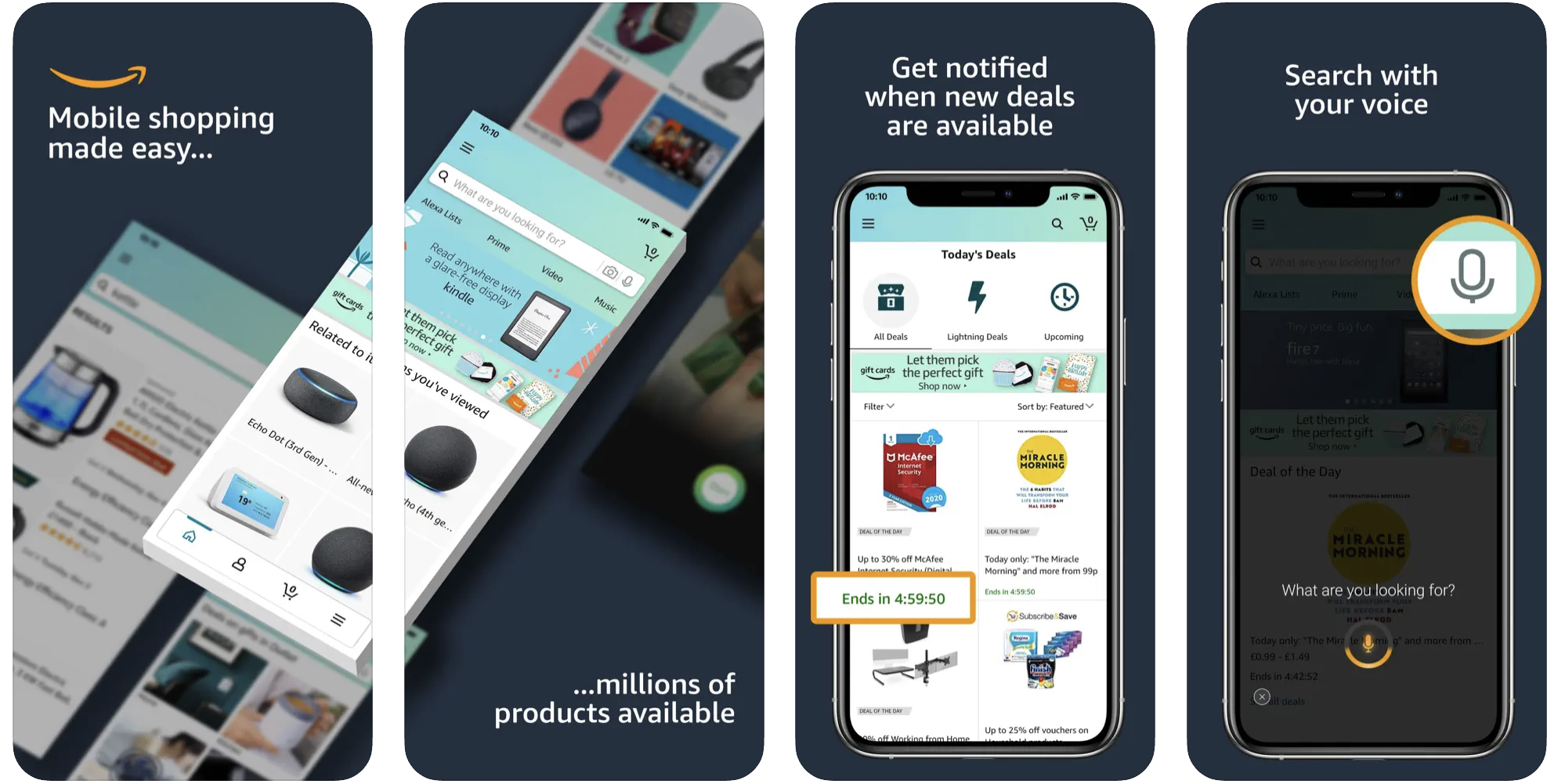
Amazon’s adoption of AI for inventory management sets a global benchmark in logistics. The company uses machine learning, predictive analytics, and robotics to forecast demand with precision, manage stock levels, and optimize warehouse operations.
Dynamic stock replenishment ensures warehouses are optimally stocked, minimizing both excess inventory and stockouts. Technologies like the Sequoia robotic system help identify and store inventory 75% faster, enabling Amazon to process millions of orders quickly, especially during peak seasons.
These innovations have not only reduced transportation costs and cut emissions but also directly supported Amazon’s promise of fast, reliable delivery.
2. Walmart: Real-time Demand Prediction
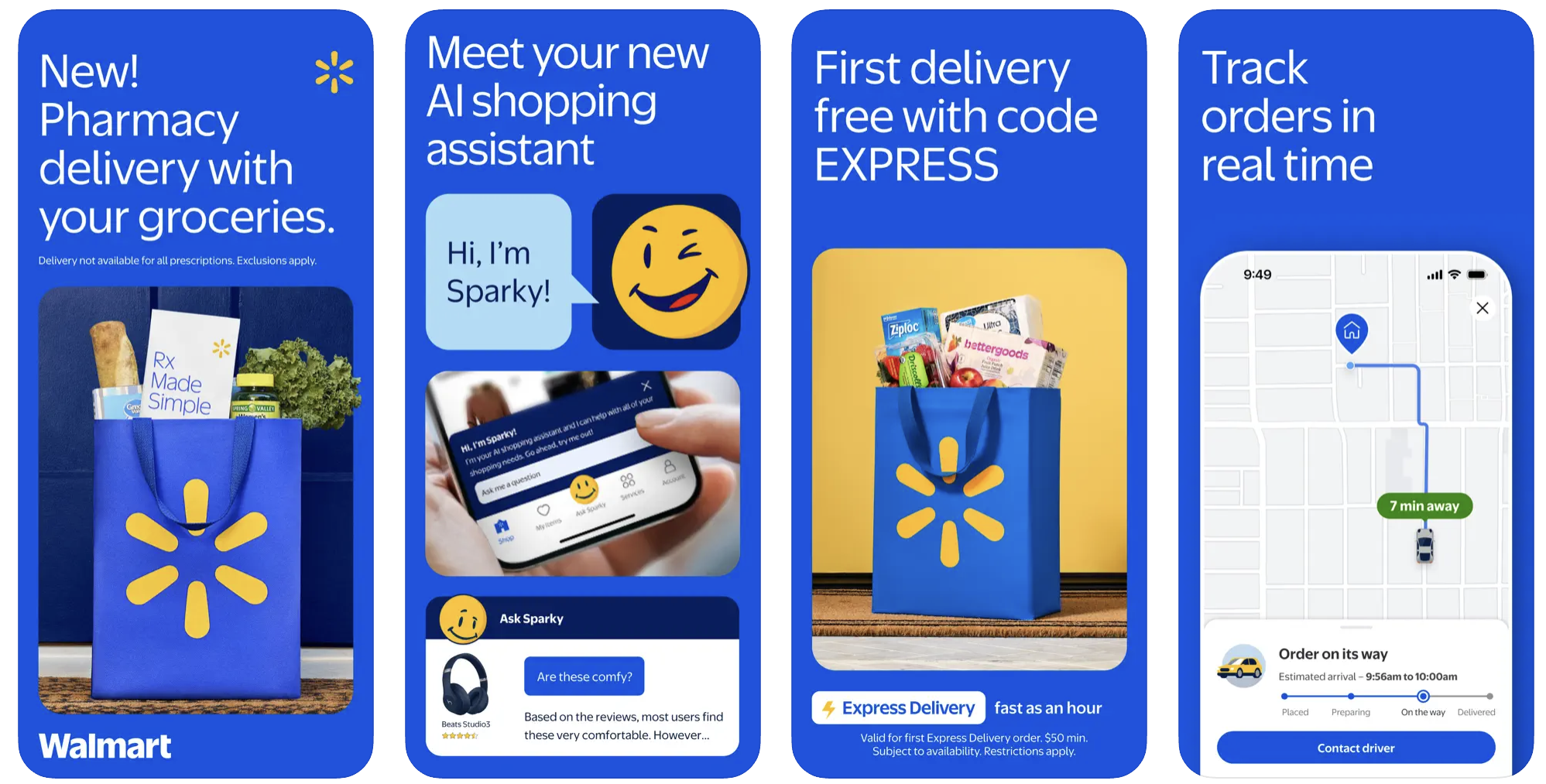
Walmart uses AI and advanced analytics to predict demand across thousands of stores in real-time. Machine learning algorithms ingest data from sales transactions, market trends, promotions, and external factors to anticipate shifts in demand.
With AI-powered insights, Walmart optimizes product availability, minimizes stockouts, and streamlines its replenishment processes. This capability is essential for managing one of the largest supply chains in the world, ensuring Walmart stays responsive and competitive in the retail market.
3. Starbucks: AI for Personalized Demand Forecasting
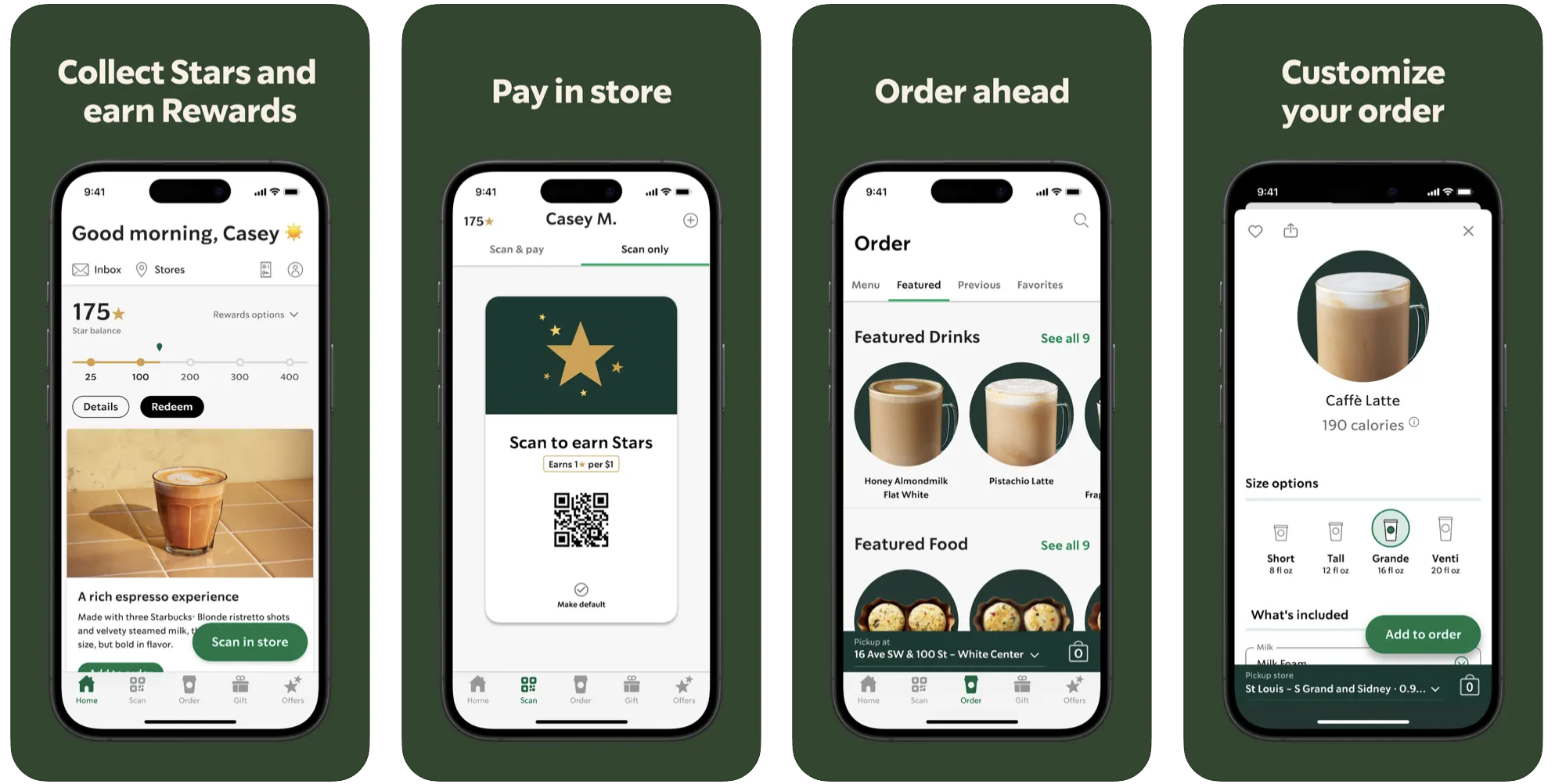
Starbucks has taken a personalized approach to AI-driven demand forecasting. By combining data from its loyalty app, local events, weather forecasts, and historic purchasing patterns, Starbucks fine-tunes inventory and staffing at each individual store.
Predictive models help Starbucks manage footfall and individual product preferences, ensuring products are fresh and waste is minimized. This personalized approach not only boosts customer satisfaction but also enhances operational efficiency, especially during peak times, making Starbucks’ operations more responsive to local demand.
4. Zara: AI for Fast Fashion Forecasting

Zara, a leader in fast fashion, integrates AI-based forecasting to stay agile in a rapidly changing market. By processing point-of-sale (POS) data, social listening inputs, weather, and trend analytics, Zara can predict demand at regional and store levels.
This allows Zara to adjust inventory quickly, ensuring faster restocks and avoiding overstock. The AI system supports Zara’s just-in-time supply chain model, enabling it to react quickly to real-time fashion trends and maintain low inventory levels while maximizing sales.
5. H&M: AI in Assortment Planning

H&M employs AI-powered demand forecasting to enhance its assortment planning and reduce inefficiencies in inventory management. By analyzing historical sales data, fashion cycles, seasonal changes, and online engagement, H&M’s AI models predict demand for each product at the SKU and store level.
As a result, H&M has improved inventory turnover, reduced markdowns, and achieved more sustainable stock management practices. This adoption of AI aligns with H&M’s goals for profitability and environmental responsibility, enabling the brand to stay competitive while being mindful of its ecological footprint.
Key Benefits of AI in Demand Forecasting
Enterprises that adopt AI-powered forecasting solutions experience tangible improvements across supply chain operations, cost control, and customer satisfaction. Here’s how AI transforms demand forecasting into a strategic advantage:
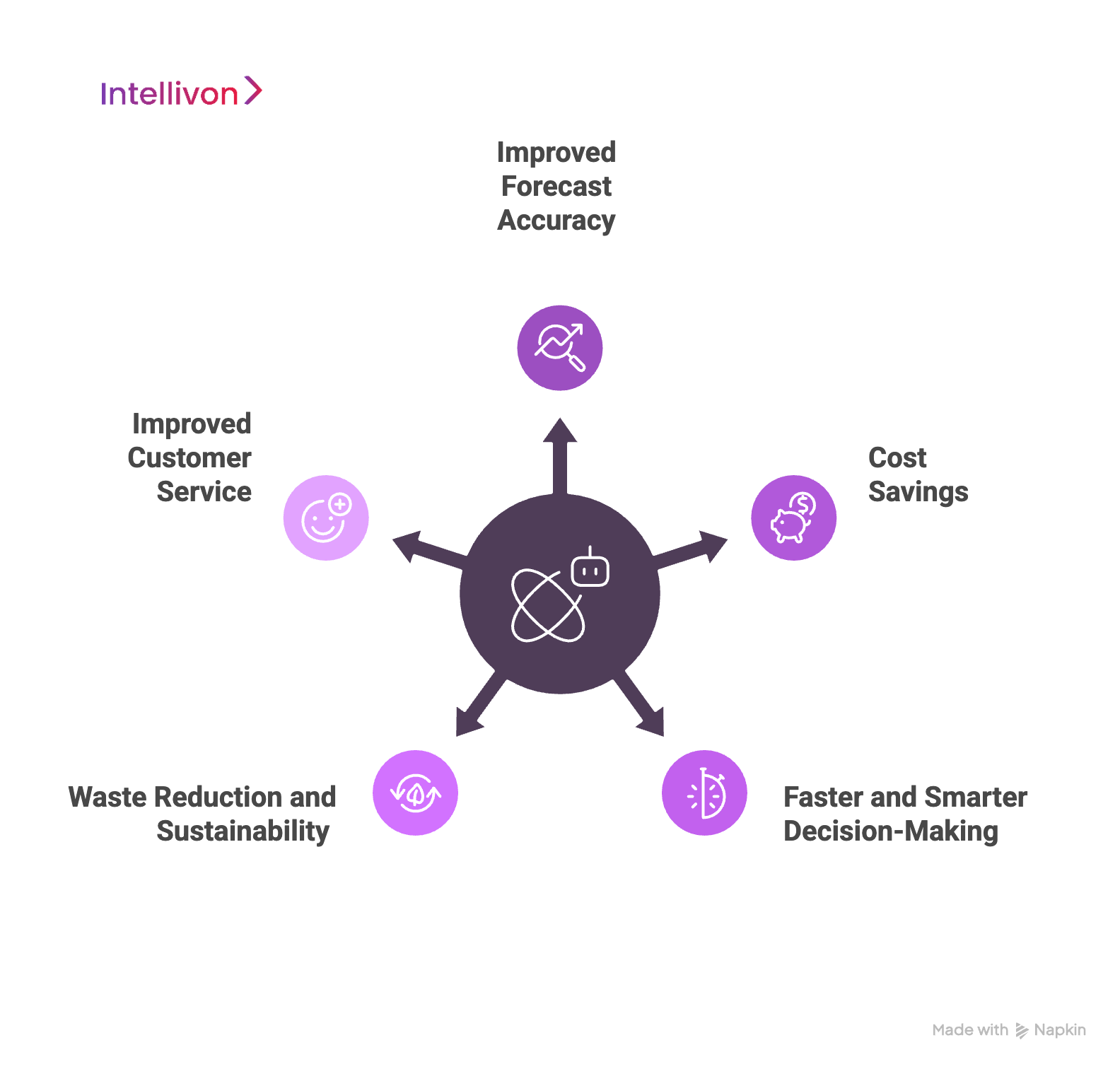
1. Improved Forecast Accuracy
AI dramatically enhances forecasting precision by analyzing massive, complex datasets that include real-time sales, shifting market trends, weather conditions, and external variables like social sentiment. Unlike static models, AI adapts continuously as new data flows in. This leads to up to 50% higher accuracy, reducing risks of both overstock and stockouts. Businesses can maintain more balanced inventory levels, avoid revenue loss, and better prepare for market fluctuations.
2. Cost Savings
By improving forecast accuracy, AI reduces the cost of holding excess stock, lowers wastage, and minimizes last-minute logistics. Businesses using AI forecasting see up to 15% lower logistics expenses, 35% less inventory overhead, and a 20% drop in operational costs.
Smarter inventory alignment allows teams to cut redundant stock, optimize warehouse space, and prevent unnecessary shipments, delivering bottom-line efficiency gains across the supply chain.
3. Faster and Smarter Decision-Making
With real-time insights and continuous data processing, AI empowers teams to make agile, data-driven decisions. Instead of waiting on outdated reports, business units access dynamic dashboards that reflect current market realities.
This speed of insight allows companies to quickly adjust production, pricing, or inventory based on actual demand signals, minimizing response lag and outperforming competitors during market shifts or supply disruptions.
4. Waste Reduction and Sustainability
AI-optimized forecasting improves demand-supply alignment, helping companies reduce overproduction and spoilage. This is especially valuable in industries with perishable goods or narrow demand windows.
By producing only what is needed, organizations cut down on waste, reduce carbon emissions from transportation, and support long-term sustainability goals. Forecasting thus becomes both cost-effective and environmentally responsible.
5. Improved Customer Service
Accurate demand forecasting ensures products are available where and when customers expect them. Enterprises report up to a 65% reduction in stockouts, directly improving service levels and brand reputation. Consistent product availability increases customer trust, drives satisfaction, and builds long-term loyalty.
With AI, businesses can even anticipate future needs, creating a proactive customer experience rather than a reactive one.
Challenges of AI in Demand Forecasting and How We Solve Them
While AI demand forecasting offers immense benefits, enterprises often encounter roadblocks during implementation. At Intellivon, we anticipate these challenges and design solutions that ensure seamless adoption, measurable ROI, and long-term success.
1. Data Quality and Fragmentation
AI systems rely on clean, complete, and well-structured data. Unfortunately, most enterprises struggle with inconsistent formats, missing values, and fragmented data across departments, tools, and regions. This fragmentation undermines model accuracy and trust in predictions.
Our Solution:
We begin by establishing a strong data foundation. Automated pipelines clean and normalize data, while smart mapping tools unify sources across ERP, CRM, POS, and external feeds. We also implement data governance protocols and conduct regular audits to maintain quality and reliability over time.
2. Complexity of Integration with Legacy Systems
Integrating AI solutions into existing enterprise ecosystems, including legacy ERPs, planning tools, and manual workflows, can feel daunting. Many businesses worry about disruption, downtime, or long learning curves for internal teams.
Our Solution:
Intellivon follows a phased, low-risk implementation strategy. We begin with a pilot to prove value, gain stakeholder alignment, and fine-tune workflows. Integration is handled collaboratively with in-house teams, backed by detailed documentation, training, and ongoing support to ensure adoption without disrupting daily operations.
3. High Initial Costs and ROI Uncertainty
The upfront investment in AI tools, infrastructure, and skilled resources can feel overwhelming, especially when ROI is unclear or long-term.
Our Solution:
We recommend a modular approach, starting with high-impact use cases that demonstrate value quickly. Our cloud-first, scalable architecture helps enterprises manage costs and expand capabilities incrementally. This allows decision-makers to invest confidently, based on early results.
4. Lack of Real-Time Data Access
Many forecasting tools operate on outdated or batched data, which limits agility in fast-changing environments. Without real-time input, forecasts miss emerging trends, short-term shifts, and critical signals.
Our Solution:
We integrate real-time data streams from IoT devices, POS systems, and online platforms to keep models current. This enables businesses to respond proactively to demand fluctuations, inventory changes, and external events as they happen.
5. Model Transparency and Human Trust
Black-box AI systems can be difficult for business teams to understand, leading to skepticism or hesitation in adopting model-driven decisions. Lack of clarity around how forecasts are generated reduces trust.
Our Solution:
We prioritize explainable AI from the start. Every Intellivon forecasting solution includes clear visualization dashboards, interpretable model outputs, and audit trails. Stakeholders are actively engaged throughout the process, ensuring transparency, collaboration, and confidence in outcomes.
6. Privacy and Compliance Considerations
Enterprises must handle sensitive customer and operational data carefully to comply with privacy regulations and internal security standards.
Our Solution:
Intellivon embeds security and compliance into every layer of the system. We enforce strict data handling policies, anonymization where required, and conduct regular compliance checks. Our solutions are designed to meet enterprise-grade security protocols from day one.
Technical and Business Considerations when Building AI Demand Forecasting Systems
Developing enterprise-grade AI demand forecasting systems is more than just choosing the right algorithm. It requires a holistic approach that balances data quality, technical scalability, system integration, and business alignment. At Intellivon, we help enterprises navigate each of these dimensions to create forecasting engines that are not only powerful but practical and trusted across the organization.
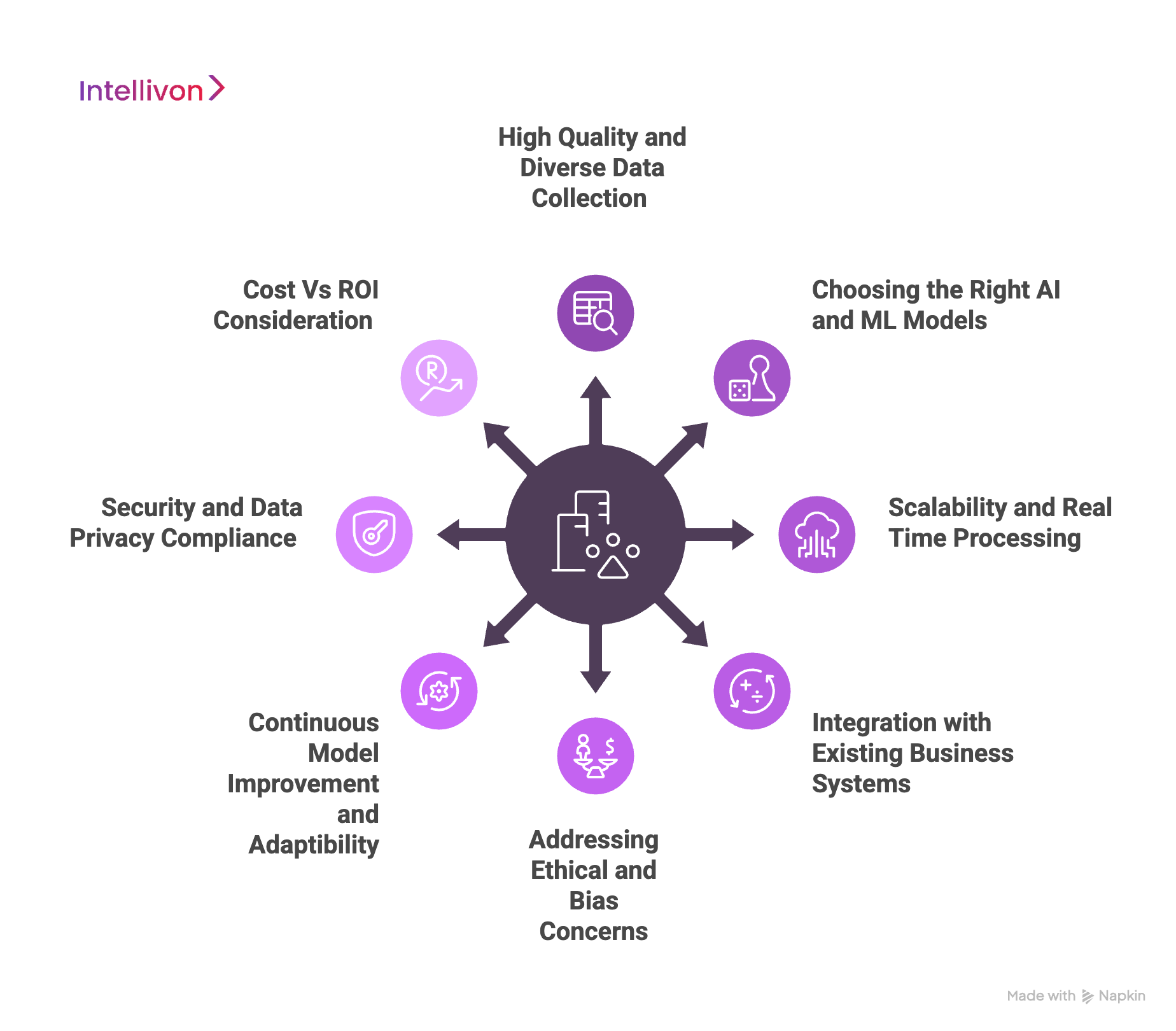
1. High-Quality and Diverse Data Collection
The foundation of any effective forecasting system lies in the quality and diversity of its data. To generate meaningful predictions, enterprises must gather accurate, well-structured data from both internal and external sources. This includes historical sales, market demand trends, economic indicators, promotional calendars, weather, and consumer behavior patterns. At Intellivon, we implement automated pipelines for data ingestion, transformation, and integration, ensuring a unified and clean dataset ready for modeling.
2. Choosing the Right AI and ML Models
There is no universal forecasting model that fits every business case. The choice of algorithm, whether it’s ARIMA for time-series analysis, LSTM for sequential data, transformer-based models for deep learning, or ensemble methods like XGBoost, depends on your business goals, data maturity, and demand complexity. We carefully match model architectures to your unique scenario and perform feature engineering to surface hidden patterns and boost predictive performance.
3. Scalability and Real-Time Processing
Enterprises operate at massive scale, across thousands of SKUs and fluctuating demand signals. Your AI forecasting solution must scale effortlessly while processing data in real time or near real time. This enables responsive forecasting that captures live changes in consumer behavior or market conditions. Intellivon builds cloud-native, event-driven architectures that support high-throughput data pipelines and instant recalculations without performance lag.
4. Integration with Existing Business Systems
Forecasting only delivers value when insights are seamlessly embedded into your existing tools and workflows. We design AI systems that integrate directly with ERP, CRM, supply chain management software, and business intelligence dashboards. By co-developing with IT and business teams, we ensure that forecasting insights are accessible, actionable, and tied to planning, inventory, and procurement systems.
5. Addressing Ethical and Bias Concerns
Forecasting models can unintentionally amplify biases hidden in historical data. Whether related to product performance, location, or customer segments, unchecked biases can lead to skewed or unfair outcomes. Intellivon proactively monitors for these issues during data preparation and model evaluation stages. We apply fairness metrics and incorporate diverse datasets to ensure ethical, unbiased forecasting.
6. Continuous Model Improvement and Adaptability
Markets are constantly evolving. What works today may be irrelevant tomorrow. Our forecasting systems are designed with continuous learning loops, retraining automatically based on new data, market shifts, or user feedback. We validate model performance over time using KPIs such as MAPE and MAE, ensuring the solution remains accurate, responsive, and aligned with changing business needs.
7. Security and Data Privacy Compliance
Forecasting often involves sensitive transactional and customer data. Protecting this information is critical. We implement secure cloud environments with encrypted data pipelines, strict access controls, and data masking practices. Additionally, Intellivon ensures compliance with global privacy regulations through audit-ready architectures and built-in policy enforcement mechanisms.
8. Cost Versus ROI Consideration
Investment in AI must be justified by tangible outcomes. Our approach focuses on prioritizing high-impact areas with clear ROI, such as reducing stockouts, optimizing working capital, or minimizing markdowns. We often start with pilot deployments to demonstrate success early and expand based on results. Cloud-based infrastructure allows you to scale affordably and adjust spending as the system proves its value.
9. Partnering with AI Experts
Building a forecasting engine that truly works at scale requires the right partner. At Intellivon, we bring deep AI experience, industry-specific insight, and a consultative approach. We guide your team through every stage, from initial data assessment and architecture design to model deployment, integration, and continuous support. Our hands-on approach ensures the system fits your business, delivers measurable results, and evolves with your goals.
Future Trends in AI in Demand Forecasting
As enterprises push toward agility, resilience, and long-term growth, AI demand forecasting continues to evolve rapidly. Emerging technologies are not only improving forecast accuracy but also aligning forecasting systems with strategic, ethical, and operational priorities. Here’s what’s shaping the future of enterprise forecasting:
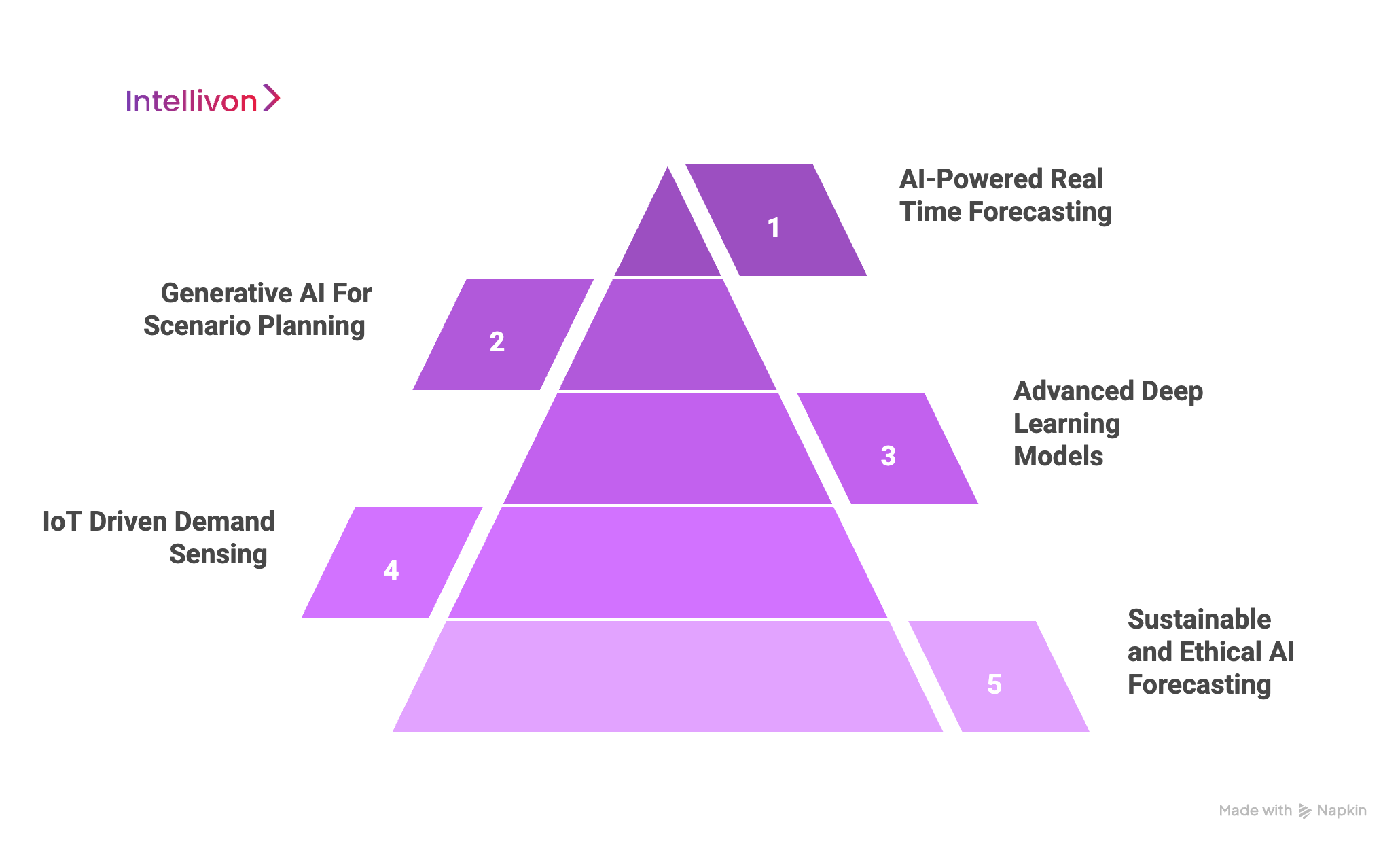
1. AI-Powered Real-Time Forecasting
Real-time forecasting is redefining how enterprises respond to market volatility. Today’s AI systems ingest and analyze continuous streams of structured and unstructured data—such as live sales, web traffic, social sentiment, and even local news. These systems generate instant demand insights that allow organizations to pivot their supply chains and inventory strategies on the fly. As a result, businesses avoid delays, reduce forecasting errors, and maintain a competitive edge during rapid demand swings.
2. Generative AI for Scenario Planning
Generative AI is becoming a powerful tool for proactive forecasting. Instead of being limited to historical trends, enterprises can simulate new market conditions, test pricing scenarios, or model the impact of disruptive events—ranging from global crises to regulatory changes. These generative models help businesses prepare for the unexpected by creating dynamic “what-if” simulations that enhance risk mitigation and strategic planning.
3. Advanced Deep Learning Models
The use of transformer-based and multi-layered deep learning models is unlocking new levels of forecasting sophistication. These models interpret complex relationships among data points—such as seasonal demand, consumer cohorts, and economic indicators, with greater accuracy. Their self-learning capabilities mean they continually adapt and improve, providing enterprises with hyper-granular predictions tailored to individual SKUs, geographies, or customer segments.
4. IoT-Driven Demand Sensing
The integration of Internet of Things (IoT) data is making demand sensing more precise and real-time. Smart sensors in warehouses, connected retail shelves, POS systems, and even consumer appliances provide high-resolution data on inventory movement and usage. When fed into AI forecasting engines, this data enhances responsiveness, uncovers early trends, and drives faster decision-making, especially critical in perishable goods, fast fashion, or just-in-time delivery models.
5. Sustainable and Ethical AI Forecasting
AI forecasting is about responsibility. Enterprises are leveraging AI to reduce waste, optimize production cycles, and support sustainable sourcing practices. At the same time, regulatory pressures and consumer expectations are pushing companies to embrace ethical AI. Explainability, fairness, and transparency are now core requirements. AI forecasting models must be interpretable, auditable, and free from bias to gain lasting trust from users and stakeholders.
Conclusion
AI demand forecasting is essential for enterprises aiming to stay agile, efficient, and competitive. By combining real-time data, advanced modeling, and intelligent automation, businesses can make faster, smarter decisions with greater accuracy.
From cost savings to customer satisfaction, the benefits are clear. With the right partner like Intellivon, AI-powered forecasting becomes a scalable, future-ready asset that drives measurable business growth.
Why Partner With Intellivon for AI Demand Forecasting Solutions
With over 11 years of enterprise AI experience and more than 500 successful implementations worldwide, Intellivon is your trusted partner in building scalable, intelligent demand forecasting systems that drive measurable business impact. From enhancing forecast accuracy to enabling real-time supply chain agility, we help global enterprises move from reactive planning to proactive, AI-driven decision-making.
What Sets Intellivon Apart?
- AI-Driven Predictive Analytics for Accurate Forecasting
We develop enterprise-grade forecasting engines that leverage cutting-edge machine learning models,including LSTM, XGBoost, and transformers—to deliver highly accurate, granular predictions across product lines, geographies, and customer segments. - Real-Time Data Processing & Dynamic Adjustments
Our systems ingest and analyze real-time data streams from ERP, CRM, POS, IoT, and market sources, enabling continuous reforecasting and instant responsiveness to demand shifts or disruptions. - Advanced Customization & Industry-Specific Solutions
We tailor every solution to your sector, be it retail, manufacturing, healthcare, or logistics, ensuring that the AI architecture reflects your unique demand drivers, product life cycles, and KPIs. - Seamless Integration with Your Existing Systems
Intellivon integrates AI forecasting seamlessly with your ERP, CRM, supply chain, and BI platforms, ensuring that insights flow directly into your existing planning and operations without disruption. - AI-Enabled Automation for Efficiency & Cost Reduction
Our systems automate replenishment triggers, procurement scheduling, and promotional planning, reducing manual workload, cutting operational costs, and increasing organizational efficiency. - Advanced Visualization & Decision Support
We provide intuitive, role-based dashboards and interactive tools that empower your teams to visualize trends, test scenarios, and make fast, informed business decisions. - Generative AI for Scenario Planning & Risk Mitigation
Our solutions include generative AI capabilities that simulate “what-if” scenarios, allowing you to prepare for pricing changes, product launches, or unexpected global events before they happen. - Secure, Scalable, and Future-Proof AI Technology
Built on robust cloud infrastructure and compliant with enterprise security standards, our platforms scale as you grow and evolve continuously with the latest AI innovations. - Dedicated AI Experts & 24/7 Support
From discovery to deployment and beyond, you’ll have access to our world-class AI consultants, data scientists, and customer success team, offering hands-on support, performance tuning, and strategic optimization.
Book a strategy call with our enterprise AI team today.

FAQs
Q1. What is AI demand forecasting and how is it different from traditional methods?
A1. AI demand forecasting uses machine learning and artificial intelligence to analyze large volumes of internal and external data to predict future demand. Unlike traditional methods that rely solely on historical sales trends, AI systems adapt to real-time changes, external market signals, and complex data relationships to deliver more accurate and dynamic forecasts.
Q2. How accurate are AI-powered demand forecasting systems?
A2. AI forecasting systems can improve forecast accuracy by up to 50% compared to legacy models. The precision depends on data quality, model choice, and system integration. With real-time inputs and continuous learning, these systems can deliver granular, highly adaptive predictions across SKUs, regions, and timeframes.
Q3. What kind of data is needed for AI demand forecasting to work effectively?
A3. Effective AI forecasting requires both internal and external data sources. This includes ERP and CRM data, historical sales, inventory levels, pricing, POS activity, weather data, market trends, social media sentiment, and IoT signals. High-quality, diverse data sets enhance model accuracy and adaptability.
Q4. Can AI forecasting systems integrate with existing enterprise tools like ERP or CRM?
A4. Yes, modern AI forecasting solutions are designed to integrate seamlessly with existing enterprise systems such as ERP, CRM, supply chain platforms, and BI dashboards. At Intellivon, we ensure smooth data flow, minimal disruption, and intuitive access to insights within your current workflows.
Q5. What are the benefits of partnering with Intellivon for AI demand forecasting?
A5. Intellivon brings over a decade of enterprise AI expertise, with custom-built solutions that combine predictive analytics, real-time data processing, and deep industry alignment. We offer scalable cloud architectures, explainable AI, scenario planning with generative models, and dedicated support for long-term success and ROI.

